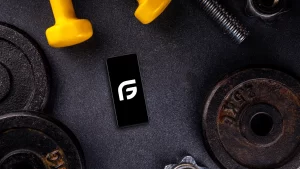How to Build Muscle: A Comprehensive Guide for Beginners and Intermediates
Understanding Muscle Growth
- Adequate resistance training
- Proper nutrition
- Sufficient rest and recovery
The Fundamentals of Building Muscle
1. Progressive Overload
- Increase weights by 2-5% when you can perform all sets with good form
- Add an extra set to your exercises
- Decrease rest time between sets
2. Proper Nutrition for Muscle Growth
- Protein intake: Aim for 1.6-2.2 grams of protein per kilogram of body weight daily
- Caloric surplus: Consume slightly more calories than you burn to support muscle growth
- Balanced macronutrients: Include adequate carbohydrates and healthy fats in your diet
– The Ultimate Guide to Healthy Weight Gain
3. Effective Workout Routines
- Chest, shoulders, and triceps
- Back and biceps
- Legs and core
4. Rest and Recovery
- 7-9 hours of sleep per night
- At least one full rest day per week
- Proper post-workout nutrition to support recovery
– The Role of Rest and Recovery in Fitness
Advanced Muscle Building Techniques

1. Drop Sets
2. Supersets
3. Time Under Tension
Common Mistakes to Avoid

When building muscle, be aware of these common pitfalls:
- Overtraining: More is not always better. Adequate rest is crucial for muscle growth.
- Neglecting form: Poor form can lead to injury and reduced muscle activation.
- Inconsistency: Muscle building requires consistent effort over time.
- Ignoring nutrition: You can’t out-train a poor diet. Proper nutrition is essential for muscle growth.
Tracking Your Progress

- Taking progress photos every 4-6 weeks
- Keeping a workout log to track strength gains
- Using body measurements in addition to scale weight
Conclusion
Building muscle is a journey that requires patience, consistency, and dedication. By following the principles outlined in this guide – progressive overload, proper nutrition, effective workouts, and adequate rest – you’ll be well on your way to achieving your muscle-building goals.
Remember, everyone’s body responds differently to training stimuli. It’s essential to listen to your body and adjust your approach as needed. If you’re unsure about where to start or how to progress, consider working with a certified personal trainer who can provide personalized guidance.
At GrowFit, we’re committed to helping you achieve your fitness goals, including building lean muscle mass. Our expert trainers and state-of-the-art facilities are here to support you every step of the way. Ready to start your muscle-building journey? Contact us today to learn more about our personalized training programs and nutrition consultations.
FAQ’s
1. What’s the difference between flexibility and mobility?
2. How often should I incorporate flexibility and mobility exercises into my routine?
3. Can improving flexibility and mobility help prevent injuries?
4. What are some effective ways to improve flexibility and mobility?
5. Should I stretch before or after my workout?
6. How long should I hold a stretch?
7. Can flexibility and mobility exercises help with muscle soreness?
8. Are there any age limitations for improving flexibility and mobility?
People of all ages can increase their flexibility and mobility with regular stretching and mobility exercises, even though these skills tend to decline with age. Although it’s never too late to start, you should always get medical advice before starting a new fitness program, particularly if you have any health issues.
Also Check out our detailed articles on:
- What’s the Best Gym Management Software in India, and Why?
- Who Are The Audience of GrowFit
- How GrowFit is Different from Others
For more information on specific topics covered in this guide, check out these blogs:

